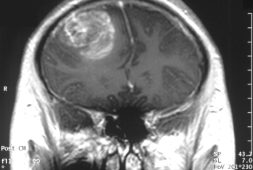A Protein That Halts The Growth Of Tumor And Is A Remedy For Drug Resistance May Be The Answer For Prostate Cancer
Cancer is the bane in the planet. With the rising number of cancer patients, scientists are working hard to find the cure. This isn’t an easy feat and different forms of cancer also require different forms of remedy. This isn’t a one-size-fits-all situation.
As for prostate cancer, there may be help along the way. There may be an answer for sufferers who have dreaded facing this disease. These researchers have been working nonstop to help them and their hard work has paid off.

Several of those who suffer from prostate cancer are being treated with drugs. These medicines help, for a while. Then, some of them unfortunately quickly develop resistance for it. What are they to do if this happens? Giving up isn’t the answer, but rather, a more efficient form of help.
Now, a new study from Washington University School of Medicine in St. Louis has pointed out an RNA molecule that has the ability to suppress tumors that grow in the prostate area. Furthermore, these scientists discovered that many forms of prostate cancer manage to develop methods to shut down this RNA molecule. After which, they continue to grow. As an answer to this dilemma, the team implanted mice with human prostate tumor samples with the new treatment, and they saw that this actually restored this long noncoding RNA. It was a breakthrough that they needed and they’ve dubbed it as a new strategy to treat the cancer that has developed resistance to the traditional forms of hormonal therapies.
“The drugs that we have to treat prostate cancer are effective initially, but most patients start developing resistance, and the drugs usually stop working after a year or two,” said senior author of the study, Nupam P. Mahajan, PhD, who is also a professor of surgery.
He further explained, “At that point, the options available for these patients are very limited. We are interested in developing new therapies for patients who have developed resistance—and we believe the RNA molecule we’ve pinpointed may lead to an effective approach.”
Statistically, around one in eight men will get prostate cancer. Thus, this is, in reality, the most common form of male cancer. People over the age of 50 are often the ones who suffer from it. The key protein that drives prostate tumor growth is called the androgen receptor. This binds itself to testosterone and stimulates the growth of the cancer cells.
The researchers looked into and studied the stretch of DNA that codes for the androgen receptor. This was when they discovered that a section of the DNA molecule next to the androgen receptor had produced a molecule that they called a long noncoding RNA. They then discovered that this long noncoding RNA plays a crucial role in the regulation of the androgen receptor. The process works both ways. Because of its position next to the androgen receptor in the genome, the researchers labeled the gene NXTAR (next to androgen receptor).

“In prostate cancer, the androgen receptor is very clever,” explained Mahajan. He is also a research member of Siteman Cancer Center at Barnes-Jewish Hospital and Washington University School of Medicine. He elaborated on the findings they made and said, “Our research shows that it suppresses its own suppressor; essentially it binds to NXTAR and shuts it down. This means that in all the prostate cancer samples that we study, we rarely find NXTAR, because it is suppressed by the heavy presence of the androgen receptor in these types of tumors. We discovered NXTAR by using a drug that my lab developed that suppresses the androgen receptor. When the androgen receptor is suppressed, NXTAR starts to appear. When we saw this, we suspected that we had discovered a tumor suppressor.”
The drug that they discovered was then called (R)-9b. This was developed to address the different aspect of prostate cancer biology. This new process takes down the expression of the androgen receptor as a whole instead of just blocking its ability to bind to testosterone or reducing overall testosterone levels in the body. Right now, the drugs available for the patients work on the premise of the latter. In this study, however, (R)-9b ended up as a tool to show the presence and role of NXTAR.
The study made was published Nov. 5 in Cancer Research. This is a journal of the American Association for Cancer Research. In the article, the researchers exhibited how restoring NXTAR expression caused the tumors to become smaller and shrink to a smaller size. They also elaborated on the fact that they didn’t need the entire long noncoding RNA to pull this off. One small, key section of the NXTAR molecule is enough to shut down the stubborn androgen receptor.
“We are hoping to develop both this (R)-9b drug and NXTAR into new therapies for prostate cancer patients who have developed resistance to the front-line treatments,” Mahajan said. “One possible strategy is to encapsulate the small molecule drug and the key piece of NXTAR into nanoparticles, perhaps into the same nanoparticle, and shut down the androgen receptor in two different ways.”
The (R)-9b inhibitor has given the license to a biotechnology startup company that is called TechnoGenesys. Mahajan and his co-author Kiran Mahajan, are co-founders of the company and have applied for a patent as well. Hopefully, this may be the very thing that cures prostate cancer and halt its process of growth altogether.



